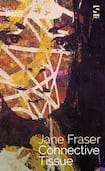
As the title suggests, these stories are separate, but connected by an intricacy of ideas, themes and characters. In the opening story, The Sausage Maker’s Daughter, we witness a girl in her father’s butcher’s shop; the father chops, dissects, and slices, much like the clean, incisive language which dazzles like the white tiles behind the counter.
The narrative delights in descriptions of offal, mince, sides of beef, the bloody tableau contrasting with the mother, perfumed and dressed in pastel colours who is “having one of her days” upstairs. Here is an indication of what to expect from this volume: deft portraits, illuminating moments, visual and economic writing. It’s a glimpse into a fractured marriage and the death of a family business, and like many good stories, it leaves you wanting more.
Indeed, some elements of the narratives reach their capillaries into others. Later, we meet a woman travelling in a continuous loop around the Circle Line in London whose father was a butcher; she remembers “rust-red liver, like a redundant afterbirth” on greaseproof paper, “the blood trickling through his fingers”. She is grieving the loss of her uterus, clutching a disturbing parcel of brown paper tied with string on her lap. “I recall from somewhere that this line was first built to freight dead meat to the terminus at West Smithfield Street.”
Sinew, bone, and blood unite each narrative, like the widow whose ache for touch leads her to the massage table; in the corner of the consulting room is a yellowing human skeleton, raising questions about the body it inhabited, an echo of loneliness.
Sally Rooney: ‘I enjoy writing about men ... the dangerous charisma of the oppressor class’
Alzheimer’s: ‘I’ve lost my friend and my companion,’ says Úna Crawford O’Brien of fellow Fair City actor Bryan Murray
Ryan Adams at Vicar Street: A gig that nobody will forget anytime soon, but perhaps not for all the right reasons
Meghan Markle’s new podcast: An ego-fluffing conversation underlining the culture gap between Ireland and the US
Along with the visceral, the stories have wit, soul, magic almost at times, like the Icarus figure of a boy cascading down to earth as a hallucination; sometimes they are haunted, like the man who dances with his departed wife, or the woman, trapped for years by domestic violence, who speaks to her younger reflection in the mirror.
Through a near miss of an affair, midlife moments, past lives, and miserable marriages, there are transplanted themes of male violence, women’s pain, regret, and ties that bind. There is the work of the surgeon in this collection, each story quickening to its own rhythm, alive to the anatomy of the whole.













